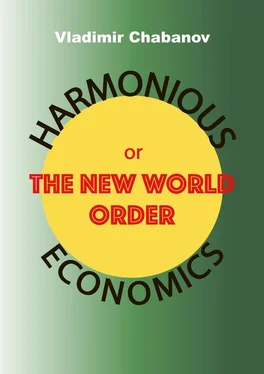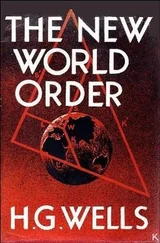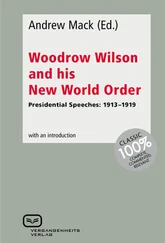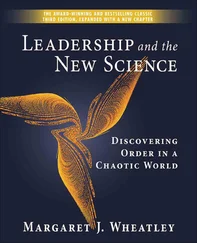The SLPis determined not only by the state of development of science and technology, of education and culture, of medicine and sport, but also by the social and national state policies, by their morality and humanity, by ecology and demography. It depends on the types of property existing in the country, on security and diplomacy, on economic relations and types of money used, too. In this light, let us elaborate on some features of this indicator.
Obviously, with SLP we are dealing with a qualitative indicator, not a quantitative one. Consequently, direct assessment of SLP is impossible, for it is impossible to assess quantitatively all human needs and to compare the commodities that satisfy these needs. However, this type of assessment is often used in everyday life, when we distinguish between “warm’ and “cold’, “good’ and “bad’, without saying exactly how warm or cold something is. Besides, almost all economic indicators cannot be measured precisely, be is labour, money, GDP, GNP, exchange, or consumer cost. This is quite logical, as economics is interested in the qualitative description of these factors, not their quantitative assessment. It is the dynamics, the dependence on various circumstances, and their impact on economic situation that matter, not the numerical result of their measurement.
At the same time, the SLPcan be fairly precisely assessed right now. Suffice it to observe that the higher the SLP, the higher the quality of life in the country. Therefore, the closest similar indicator – one measurable from the point of view of quantity and dynamics – would be the nominal average income of a worker. This corresponds to the actual value of the consumer basket (including both its tangible and intangible contents) for an average worker.
Moreover, further we will provide a description of the method of calculating the social labour intensity of commodities (SLIC) to assess its value and dynamics, which can be implemented at any enterprise separately (Subsection 3.1.2). This value is directly related to SLP, as any decrease in the SLP, all other conditions being equal, leads to an automatic SLIC increase, and vice versa. This allows stimulating the dynamics of production development, as well as determining the factors that condition it.
The unit of time for which SLPis calculated may be equal to one hour, one year or the average life expectancy. Thus, one can consider hourly, daily, monthly, yearly or secular SLP. Each of the values provides different information. For instance, secular SLPallows assessing the total quantity of commodities that a person produces in a lifetime. Besides, it helps establish the impact on SLP of such factors as average life expectancy, quality of nutrition, daily schedule, and balance between labour and rest. It also depends on the length of work leaves, the functioning of sports, healthcare and wellness facilities, ecological situation, etc.
Yearly SLPmay be used to assess the efficiency of social labour differentiation and cooperation, the impact of various reforms and reorganisations. Hourly SLPis more flexible and dynamic. It helps to study the influence of various small and big organisational measures, psychological factors, technical equipment and many other factors in the labour efficiency at enterprises. None of these indicators contradict the other, on the contrary, they form a single information data base useful for optimisation of social labour in general, as well as of specific parts of this system. Besides, they make it possible to assess the actual efficiency of economic and other structures.
SLPis significantly different from the industrial and other specific criteria of labour productivity which are used nowadays. Indeed, as the production of any item or service engages the entire society, and not just a part of it, specific criteria will not be able to correctly assess the real labour productivity of the society as a whole. Moreover, they often do more to conceal it, for many of these criteria are interdependent. For instance, income increase in financial or trade sector often entails suppression of other sectors of economics, etc.
It is obvious that a single social criterion is free of this drawback. This means that all kinds of technological and organisational novelties, property limits, and new state institutes are useful provided that they contribute to SLPgrowth. By consequence, economy has no place for selfishness, politics, ideological speculations, clan struggle, etc.
Thus, SLP is not solely an economic, but also partially a philosophic criterion related to the vision of the world. If any type of activity does not increase SLP,then it should be diminished or altogether abolished. If the social value of any type of labour is low, the share of income it produces should be limited. If the salaries of scientists, engineers, doctors, teachers, and the wages of workers are lower than the average in the country, this means their labour is in low demand. But when the income of government officials, businessmen, finance experts, tradesmen and criminals are much higher than the average, then these activities conform more with the nature of the existing state. Now is it realistic to expect, in such conditions, that the real production would be restored, the country – renewed and start developing to pass to the industrialized category?
The notion of SLPis based on the assumption that all saving of social labour is useful, and vice versa. Therefore, this indicator may be used to optimize the work of various services, to assess the efficiency of administration, the reliability of public transport; to adjust the salaries of various categories of workers, etc. For example, is a train carrying 1,000 passengers is half an hour late, is there an excuse for the circumstances that caused the loss of 500 pers./h of social labour? If production increase does not entail SLPincrease, then production rates should be slowed down. If reorganisations, measures and reforms implemented cause SLP to drop, they are, without any doubt, too aggressive. If a nanny at the kindergarten helps save the efforts of dozens of parents, this is her actual labour productivity. And this has nothing to do with the work force cost, as it does now.
Another example: today advertising consumes the time of millions of people, as well as enormous material resources amounts, while it generates profit for an insignificant number of businessmen who want to sell their products, often foreign-made. Similarly, traffic congestions take huge time, increase the fuel consumption, and accelerate destruction of roads and vehicles. Besides, they increase the demand for these commodities, and by consequence – the income of certain individuals and the tax revenue for the budget. Products of low-quality foods and counterfeit drugs kills people, but then it also helps boost the income of their producers. Consumption of tobacco and alcohol ruins the nations’ health; however, it increases the profitability of their manufacturers, excise tax revenues for the state, etc.
1.3.3. SLP suppressing factors
The accelerating decrease in the social labour productivity in most countries as “world civilisation’ develops and establishes there, despite considerable scientific and technological progress, indicates the existence of some underlying phenomena that actively counteract progress. What are they?
In order to understand this situation, let us turn back to the labour differentiation scheme presented in Figure 1. Why does the performance of this industrial relations mechanism continuously get worse? What prevents this system from being properly efficient? What are the main drawbacks of the current economic doctrine, why is its ideology deformed?
Читать дальше












